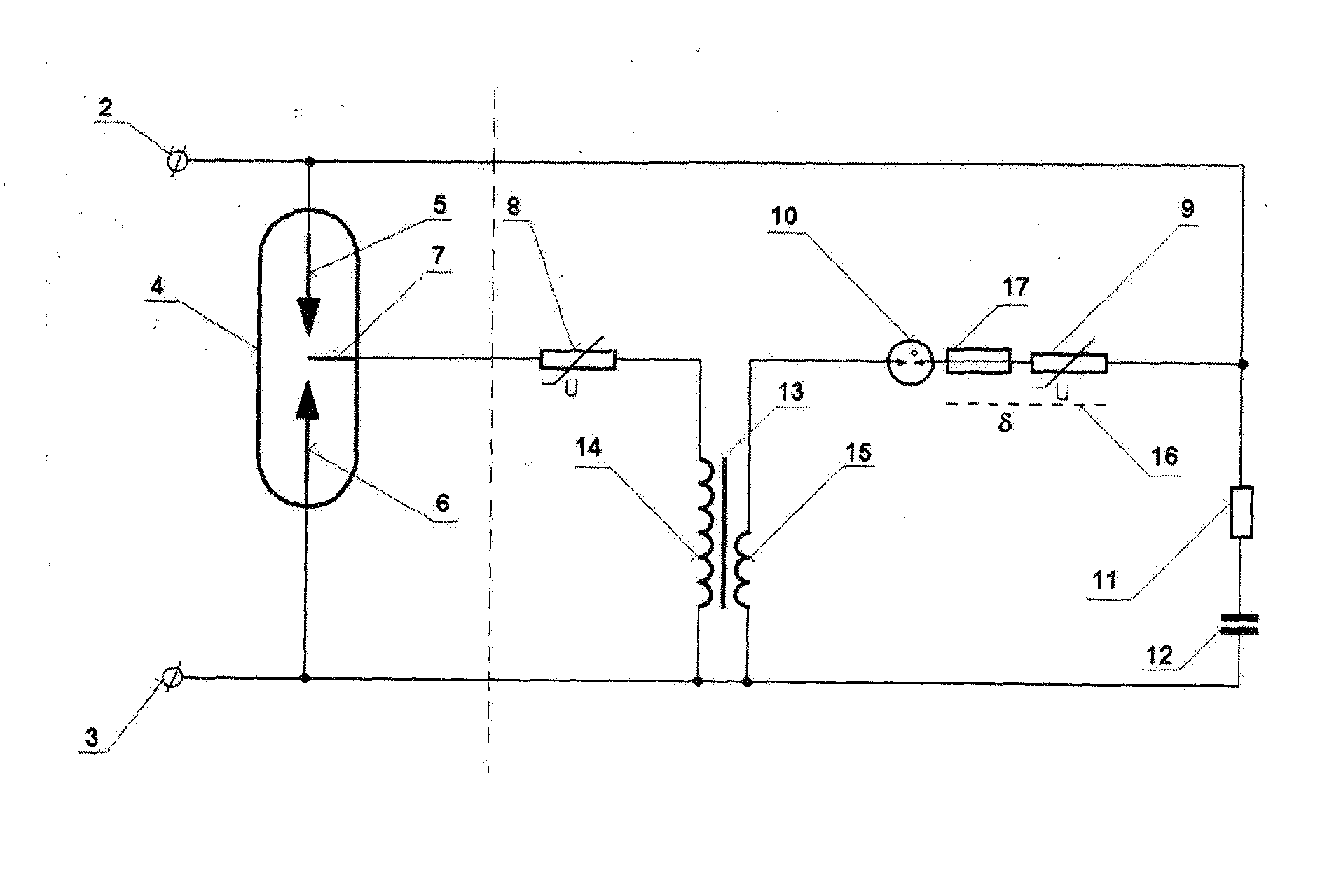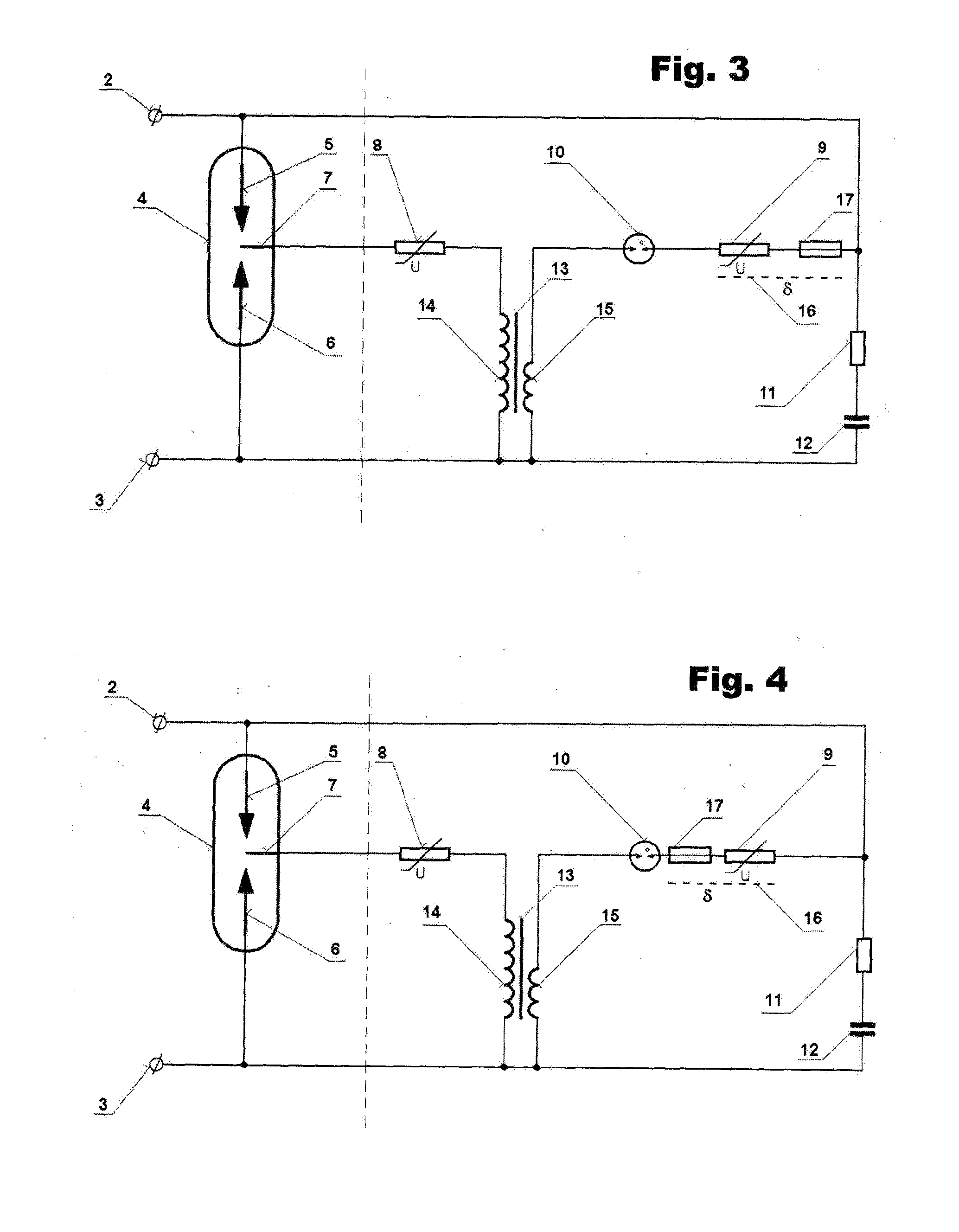Triggering circuit of the overvoltage protection
a triggering circuit and overvoltage protection technology, applied in spark gap circuits, emergency protective arrangements for limiting excess voltage/current, spark gap details, etc., can solve the problem of lack of protection function of overvoltage protection, the concept of overvoltage protection is not functional, and the current flowing through the triggering circuit oscillating character, etc. problem, to achieve the effect of safe design of the overvoltage protection triggering circuit and better triggering ability
- Summary
- Abstract
- Description
- Claims
- Application Information
AI Technical Summary
Benefits of technology
Problems solved by technology
Method used
Image
Examples
Embodiment Construction
OF THE TECHNICAL INVENTION′S IMPLEMENTATION
[0017]The overvoltage protection subject to FIG. 1 comprises a spark gap 4 of the overvoltage protection provided with the first input terminal 2 and the second input terminal 3, connected in three poles to a triggering circuit 1 of the overvoltage protection.
[0018]The basic design of the triggering circuit 1 of the overvoltage protection according to FIG. 2 comprises an auxiliary electrode 7 of the spark gap 4 which is connected in series to the first varistor 8 and one end of the secondary winding 14 of the transformer 13, the other end of which is connected to the second main electrode 6 of the spark gap 4 and to the second input terminal 3, whereas one end of the primary winding 15 of the transformer 13 is connected in series to a gas discharge tube 10, the second varistor 9, resistor 11 and capacitor 12, connected to the other end of the primary winding 15 of the transformer 13, connected to the second input terminal 3, whereas the jun...
PUM
 Login to View More
Login to View More Abstract
Description
Claims
Application Information
 Login to View More
Login to View More - R&D
- Intellectual Property
- Life Sciences
- Materials
- Tech Scout
- Unparalleled Data Quality
- Higher Quality Content
- 60% Fewer Hallucinations
Browse by: Latest US Patents, China's latest patents, Technical Efficacy Thesaurus, Application Domain, Technology Topic, Popular Technical Reports.
© 2025 PatSnap. All rights reserved.Legal|Privacy policy|Modern Slavery Act Transparency Statement|Sitemap|About US| Contact US: help@patsnap.com



